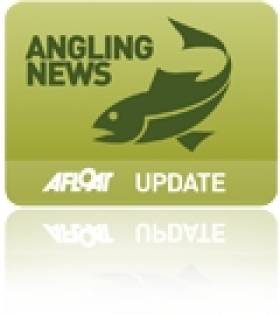Displaying items by tag: Castletown
Openings for New Salmon Season Announced
The Minister of State for Natural Resources yesterday announced more details of river openings for fishing in the New Year due to improvement in the salmon stock.
Minister Conor Lenihan announced that 52 rivers across the country - two more than 2010 - would be opened for fishing. A total of 60 will remain closed due to a lack of surplus, which is 20 fewer than last year.
Among those previously closed that will be reopened for 2011 are the Castletown, the Eske, the Glenamoy, the Kerry Blackwater and the Suir. Additional rivers will be opened on a catch-and-release basis.
The River Liffey will have a special one-time opening for fishing on New Year's Day.
Also announced was a €12 reduction in the cost of one-day angling licences, intended to encourage tourist anglers.
The Irish Times has more details on the salmon river openings and closures HERE.





























































